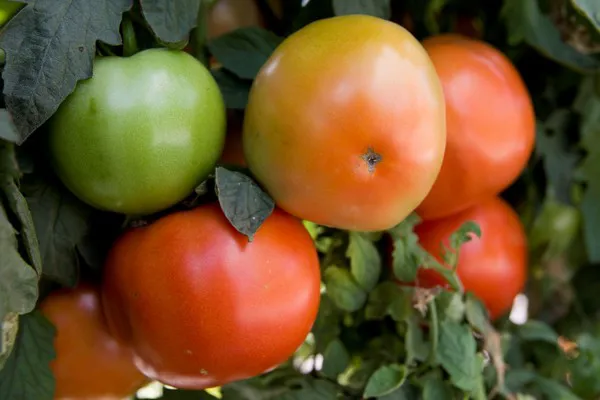As Mexico increases tomato exports across the world, including to the United States, prices plummet for American growers, including those in Florida. That practice could cost American growers as much as $252 million per year -- or 27 percent in revenue -- if imports from Mexico increase by 50 percent in coming years, based on historical trends, new University of Florida research shows.
That's a huge loss for American farmers, who produced 1.3 billion pounds of fresh tomatoes in 2020, less than one-third the harvest from the year 2000.

As Mexico increases tomato exports across the world, prices are dropping for American growers, including those in Florida.
That decline is due to competition from Mexico and other challenges, said Zhengfei Guan, an associate professor of food and resource economics at the UF Institute of Food and Agricultural Sciences.
Guan just published a study on the consequences of intensifying Mexican competition for American growers. The market positions Mexican and domestic tomato industries complete reversal over the past 20 years. Mexico now dominates the U.S. market, with three times more market share than the domestic industry. That change sparked Guan's interest in pursuing the new study.
"The two countries had a series of trade disputes over fruit and vegetables recently," he said. "One reason is that surging imports from Mexico boosted by subsidies have depressed prices, and American growers are quickly losing market shares."
"The findings from our study will provide tomato producers and policymakers with important insights on the challenges and the sustainability of the U.S. tomato industry," Guan said.
In his study, Guan measured the potential losses the U.S. industry will sustain as a result of the increasing imports from Mexico, given the steep growth over the years. As a frame of reference, the volume of imported tomatoes from Mexico increased by about 60 percent between 2009-2019.
 Zhengfei Guan's study measured the potential losses the U.S. industry will sustain as a result of the increasing imports from Mexico.
Zhengfei Guan's study measured the potential losses the U.S. industry will sustain as a result of the increasing imports from Mexico.
Results of Guan's research show that prices of domestic tomatoes are particularly sensitive to imports from Mexico in an increasingly saturated market.
The imports are especially damaging to the Florida tomato industry, with about $400 million in sales and the same harvest seasons as Mexico. West-central, southwest, and southeast Florida are the biggest tomato-producing areas in the Sunshine State.
The trade deficit complicates matters for farmers in several commodities – not just tomatoes. Specifically, fruit and vegetables -- such as tomatoes, strawberries, peppers, cucumbers, and melons – accounted for 50 percent of the total U.S. agricultural imports from Mexico in 2020, according to the U.S. Department of Agriculture.
"But all may not be lost if the U.S. fruit and vegetable industry could revolutionize the production technology," said Guan. "Mechanization or automation will be a game-changer and is the future for this labor-intensive industry."
 For more information:
For more information:
Brad Buck
University of Florida
Tel: +1 (352) 875-2641
bradbuck@ufl.edu
www.ifas.ufl.edu
